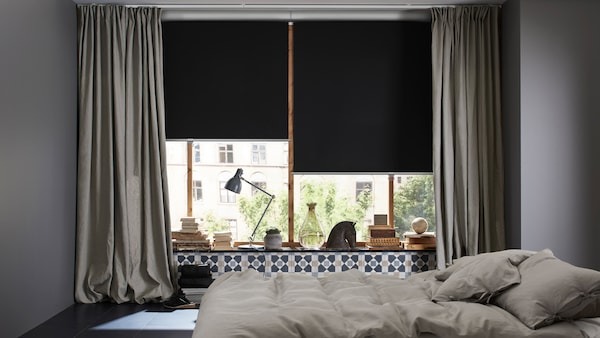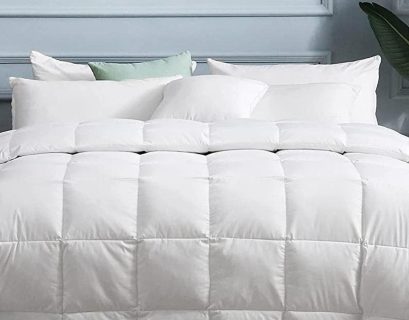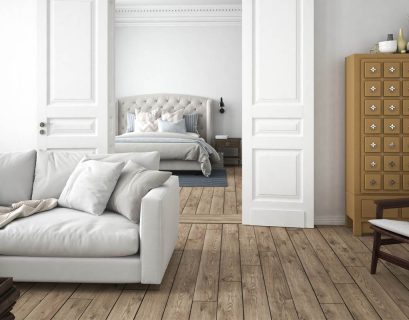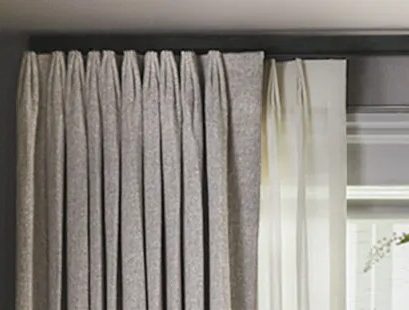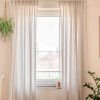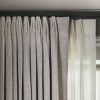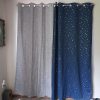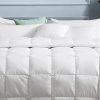In the quest for a restful night’s sleep and a serene bedroom atmosphere, the role of curtains in light control cannot be overstated. Among the myriad curtain options available, blackout curtains have gained significant popularity for their ability to create a pitch-dark environment. In this comprehensive guide, we will delve into the realm of blackout curtains, exploring their features, benefits, and whether they stand as the ultimate solution for light control in bedrooms.
Understanding Blackout Curtains:
- Construction and Material:
- Blackout curtains are crafted from thick, dense fabric layers designed to block out light entirely. The fabric often features multiple layers, including a light-absorbing inner layer and a decorative outer layer.
- Light-Blocking Mechanism:
- The primary purpose of blackout curtains is to prevent external light from penetrating the room. This is achieved through the density of the fabric and the addition of light-blocking coatings or linings.
- Thermal Insulation:
- In addition to light control, blackout curtains often provide thermal insulation. The dense fabric helps regulate room temperature by blocking out external heat or cold, contributing to energy efficiency.
- Noise Reduction:
- The thickness of blackout curtains also contributes to sound absorption, reducing external noise and creating a more peaceful and private sleep environment.
Advantages of Blackout Curtains for Light Control:
- Complete Light Blockage:
- The primary advantage of blackout curtains is their unparalleled ability to block out external light sources entirely. This is particularly beneficial for individuals who are sensitive to light or those who work night shifts and need to sleep during the day.
- Enhanced Sleep Quality:
- The darkness created by blackout curtains signals to the brain that it’s time to sleep. This can result in improved sleep quality by promoting the production of melatonin, the hormone responsible for regulating sleep-wake cycles.
- Ideal for Bedrooms with Streetlights:
- If your bedroom faces a street with frequent traffic or bright streetlights, blackout curtains act as a shield against intrusive light, fostering a serene sleeping environment.
- Shift Worker-Friendly:
- Blackout curtains are particularly beneficial for individuals who work irregular hours or night shifts. By simulating nighttime darkness during the day, these curtains aid in regulating sleep patterns.
- Privacy Enhancement:
- Beyond light control, blackout curtains provide an additional layer of privacy. Their opacity prevents outsiders from seeing into the bedroom, creating a cocoon of personal space.
- Energy Efficiency:
- The thermal insulation properties of blackout curtains contribute to energy efficiency by reducing the transfer of heat through windows. This can lead to lower energy bills, especially in extreme weather conditions.
Considerations and Alternatives:
- Room Aesthetics:
- While blackout curtains excel in light control, their aesthetic appeal might not suit every room. Individuals who prioritize room aesthetics may explore other options, such as light-filtering curtains or dual-layer solutions.
- Limited Natural Light:
- For those who enjoy waking up to natural light, blackout curtains might create an overly dark ambiance. In such cases, consider curtains with adjustable features like top-down bottom-up shades or sheer curtains for a balance between light and privacy.
- Customization:
- Blackout curtains are available in various styles and colors, but customization might be limited compared to other curtain options. Individuals seeking unique designs or tailored solutions might explore custom curtain options.
- Cleaning Challenges:
- Blackout curtains, due to their density and layered construction, can be challenging to clean. Some may require professional cleaning, and machine washing might compromise their light-blocking features. This consideration is crucial for individuals with allergies or asthma.
- Cost Factor:
- Blackout curtains, given their specialized construction, may come with a higher price tag compared to standard curtains. Individuals on a budget may need to weigh the benefits of light control against the associated costs.
- Maintenance:
- The thickness of blackout curtains can make them prone to dust accumulation. Regular maintenance, including gentle vacuuming or dusting, is essential to preserve their effectiveness and visual appeal.
Alternatives to Blackout Curtains:
- Light-Filtering Curtains:
- Light-filtering curtains offer a compromise between allowing natural light into the room and maintaining privacy. These curtains soften the incoming light, creating a gentle and diffused ambiance.
- Sheer Curtains:
- Sheer curtains are lightweight and translucent, allowing ample natural light to enter the room while providing a level of daytime privacy. They are an excellent choice for individuals who appreciate a brighter bedroom atmosphere.
- Top-Down Bottom-Up Shades:
- These shades allow for customizable light control by adjusting the position of the shade from the top or bottom. They provide flexibility in balancing natural light and privacy.
- Dual-Layer Curtains:
- Dual-layer curtains combine sheer or light-filtering fabrics with heavier materials. This allows residents to control the amount of light entering the room at different times of the day.
- Curtain Liners:
- For individuals with existing curtains who seek additional light control, curtain liners can be added. These liners attach to the back of the curtains, providing an extra layer of opacity.
Tips for Maximizing Light Control with Blackout Curtains:
- Proper Installation:
- Ensure blackout curtains are installed properly, with curtain rods positioned higher and wider than the window frame. This minimizes light gaps and enhances their effectiveness.
- Layering with Other Curtains:
- For enhanced versatility, consider layering blackout curtains with sheer or light-filtering curtains. This allows for a balance between natural light and complete darkness.
- Consider Curtain Color:
- Opt for darker-colored blackout curtains to minimize the reflection of external light. Dark colors absorb more light, enhancing their light-blocking capabilities.
- Check for Light Leaks:
- Regularly inspect blackout curtains for any signs of wear, tear, or light leaks. Repair or replace damaged sections to maintain their effectiveness.
- Customization for Enhanced Aesthetics:
- Explore customization options for blackout curtains, including various styles, colors, and patterns, to align with your room’s aesthetics.
Conclusion:
Blackout curtains undoubtedly stand as a formidable solution for light control in bedrooms, offering unparalleled darkness and privacy. However, their suitability depends on individual preferences, room aesthetics, and lifestyle factors. While blackout curtains excel in creating a cocoon of darkness conducive to quality sleep, alternative curtain options provide a range of choices for those seeking a balance between natural light and privacy. Ultimately, the decision to choose blackout curtains or explore alternatives hinges on personal preferences, lifestyle considerations, and the desired ambiance for your bedroom sanctuary.
